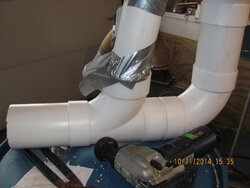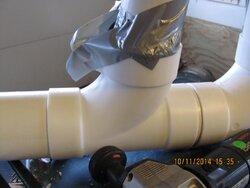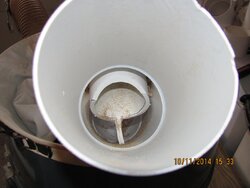Below are the latest pictures of a ventury I am now using. I am getting a fill rate of 960 lbs. per hour with this ventury. The rate of fill now appears to be limited to the amount of air being pushed through the pipe. If too many pellets are put into the fill pipe they feed into the pipe slowly as the pellets in the blower pipe are gone.
The next thing I plan to do is to add a second saw dust blower into the system. This should double the amount of air feeding pellets and hopefully increase the rate pellets can be fed into the silo.
The next thing I plan to do is to add a second saw dust blower into the system. This should double the amount of air feeding pellets and hopefully increase the rate pellets can be fed into the silo.





